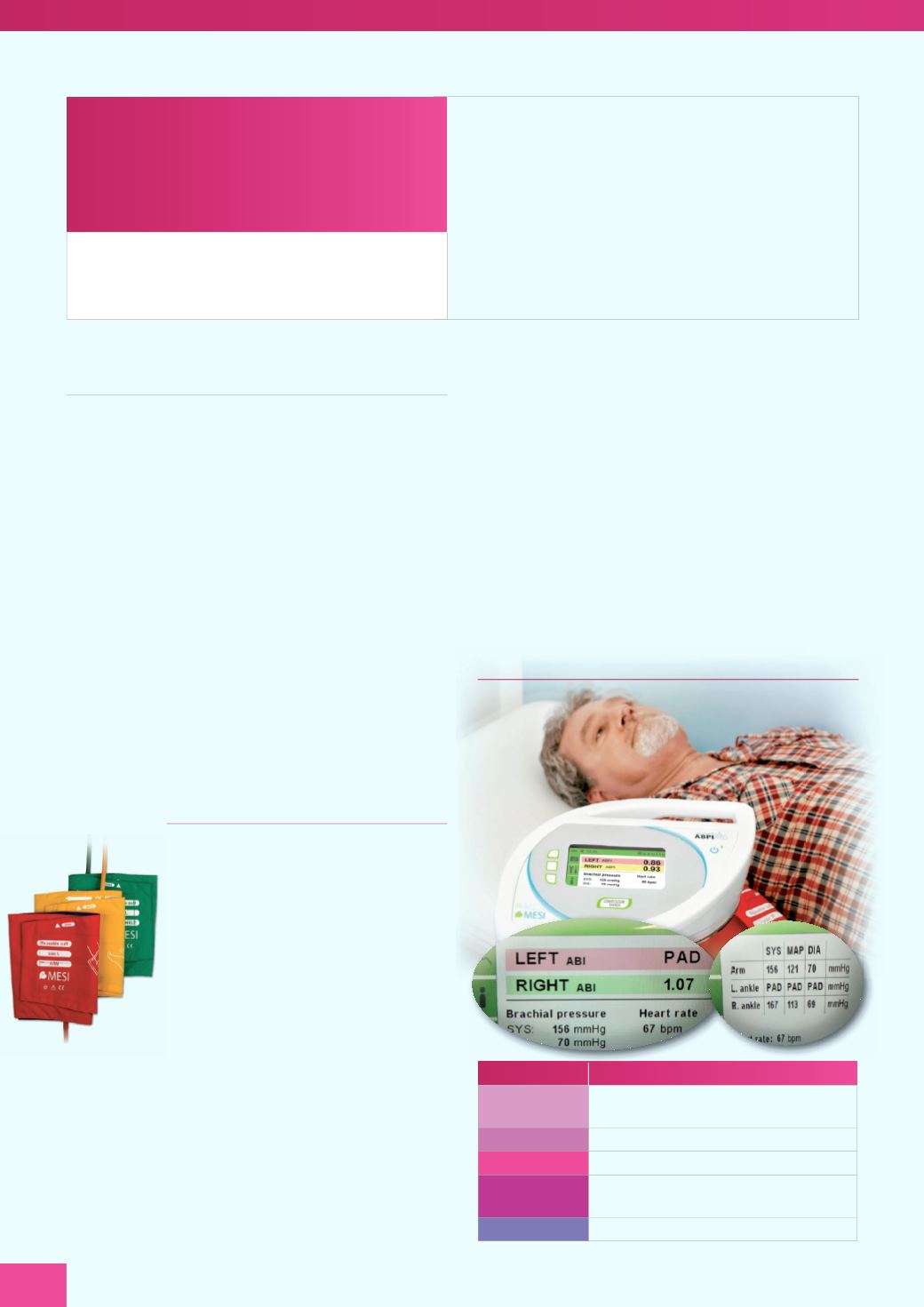
Snapshot
learning
This snapshot learning introduces MESI ABPI MD,
an automated ankle brachial pressure index (ABPI)
measuring device for quick and objective diagnosis
of lower limb peripheral arterial disease (PAD). Read
the feature and find out more about using this new
screening tool in day-to-day clinical practice —
then reflect on what you have learnt for your
individual CPD time.
MESI ABPI MD
WHY MEASURE ANKLE BRACHIAL PRESSURE INDEX?
Calculating ankle brachial pressure index (ABPI), i.e.
comparing ankle and brachial systolic blood pressure,
is a key component of comprehensive, holistic wound
assessment, particularly for venous leg ulceration (VLU).
While it is not a diagnostic test, results are vital to determine
the absence or presence and extent of lower limb peripheral
arterial disease (PAD), which is crucial when deciding
on treatment options, i.e. if compression therapy can be
introduced and, if so, at what level.Traditionally, this test has
been carried out with the use of a handheld Doppler device
by a skilled clinician (Beldon, 2010).
Recent research has highlighted that ABPI assessment is
an area which healthcare professionals need to address
and improve (Guest et al, 2015). Indeed, guidelines
recommend that the test should be performed not only at
initial assessment, but on an ongoing basis to ensure that
there has been no deterioration in a patient’s arterial status
(National Institute for Health and Care Excellence [NICE],
2013; Wounds UK, 2016).
WHAT IS MESI ABPI MD?
MESI ABPI MD (available frommedi UK)
is a new, portable, automated screening
tool for effectively and easily measuring a
patient’s ABPI.The device not only takes
accurate ABPI measurements, but also
provides the patient’s blood pressure and
heart rate in one reading. Its colour-coded
cuffs simplify use, as the different colours
indicate where each should be placed, i.e.:
X
Red on the upper arm
X
Green on the right ankle
X
Yellow on the left ankle.
These conical-shaped cuffs fit well to ensure accuracy
and are available in medium and large sizes. As the cuffs
inflate simultaneously, there is no delay between separate
measurements being taken, thereby supporting accurate
ABPI readings.
The device is lightweight and battery powered, so can be
used out in the community — 30–50 readings can be taken
from a fully charged battery.
The device also comes with a MESIresults application,
which means that healthcare professionals can connect
it to a computer for an electronic copy or print-out of the
ABPI result.This also allows for patient information (name,
address, etc) to be included on measurement reports.
How to use in three simple steps
One:
Ensure that the patient is lying down comfortably
and then place the colour-coded red, yellow and
green cuffs correctly on the patient (each cuff
is clearly labelled and has a diagram to ensure
correct placement)
Two:
Just press the start button
Three:
Read the results in one minute.
54
WOUND CARE TODAY
2017,Vol 4, No 1
ABPI
INDICATION
>1.3 or non-
occluding arteries
Arterial disease, walls of arteries hardening or
oedema present
1.0–1.3
Normal arterial blood flow
0.8–1.0
Arterial blood flow adequate for high compression
<0.8–0.5
A level of arterial disease for which compression
therapy should not be used
0.5 or <0.5
Severe ischaemia, compression should not be used
WHAT DO THE READINGS MEAN?








